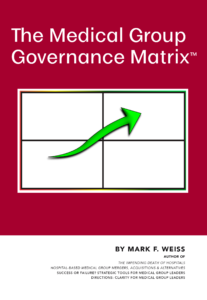In the U.S., it seems that lots of people expect a tip, from the person who simply hands you your coffee at Starbucks to, I’d expect, hospital administrators (but only at for-profit facilities). Okay, just kidding, but you get the idea.
But what’s a tip for? And, what can medical groups learn from it?
It seems that no one knows where tipping really started. Some say it began in Tudor England. Others say it began in the Middle Ages. It doesn’t really matter.
As ingrained in our culture, the point of tipping is to encourage and reward good service.
Of course, when a tip is expected, it does neither. As in, “Sure I gave you crummy service but where in heck is my 20%!” At that point it’s just an entitlement. It provides no motivation.
Medical groups generally compensate their physicians on a production basis, whether it’s expressed on an actual unit basis or as a salary based on projected productivity. If there’s a bonus, it’s generally calculated along the same lines.
But what about paying for good service? That’s usually left out of the calculation. Maybe the thought is that it doesn’t matter. Maybe the thought is that it’s too difficult to figure out.
The problem is that paying only for productivity ignores the opportunity to use compensation to drive behavior within the group and as to third parties: patients, hospital staff, and referral sources.
Sure, these are subjective factors. That’s the point.
The ability to deliver great medical care is simply the “price of admission” for physicians and for medical groups. The “soft” attributes like customer service and proper behavior are factors that help distinguish your group in creating an Experience Monopoly™.
If your group’s compensation plan doesn’t address encouraging behavior and good service, you’re missing an important opportunity to shape your group’s overall future.
This tip is free. No tip expected.




